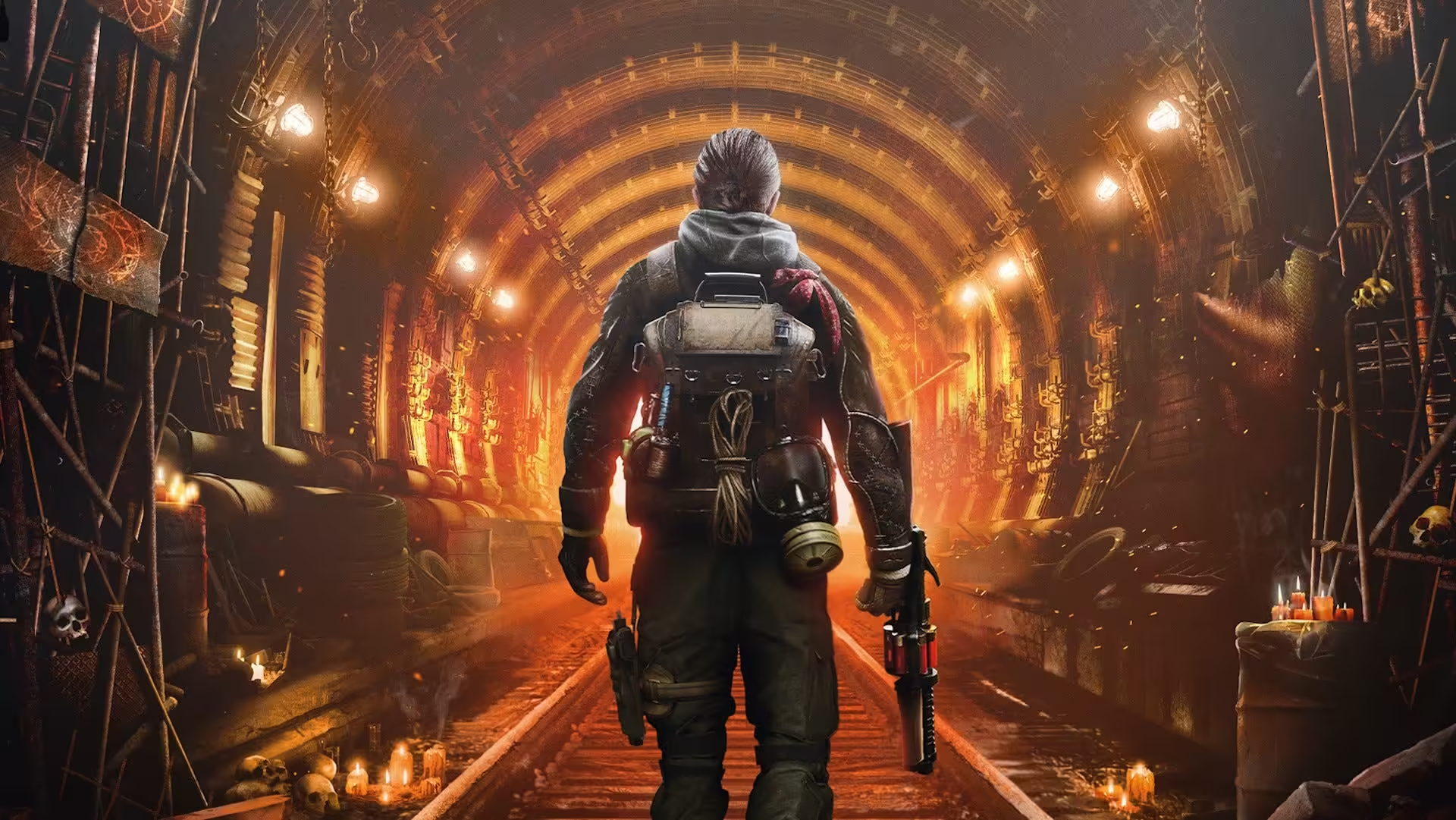The Texas Chain Saw Massacre: The Game Review
Estimated reading time: 12 minutes
Perhaps as an ode to the horror movie genre itself, The Texas Chain Saw Massacre starts out with all the same joy and promise of a group of friends preparing for a weekend at a cabin in the woods before things quickly take a turn for the worse. While I definitely enjoyed plenty of my 20 hours with this novel take on the asymmetrical multiplayer blueprint, where three powerful murderers hunt down a team of four elusive teens, getting started wasn’t as smooth as it is in similar games and there’s less to do than expected once you’re up and running. Between that and some seriously frustrating technical issues, there was definitely a chloroform-doused wet blanket over the whole thing.
If you’ve played any asymmetrical horror game, be that Dead By Daylight or Friday the 13th, Evil Dead or Ghostbusters: Spirits Unleashed (among others), then you’ve already got a pretty good idea how developer Gun Interactive’s The Texas Chain Saw Massacre works, to the point where it feels extremely familiar at first, right down to borrowed ideas like quicktime events and minigames to do things like turn on generators and pick locks, and hiding from baddies who can’t be killed.
But it also includes some important distinctions that help separate it (at least a little bit) from its peers, the biggest of which is that instead of a group of survivors running from one psychopath, there’s a whole team of psychopaths working together to entrap and eliminate their high school-aged quarry. It’s still lopsided at three killers vs four victims, but that adjustment has pretty substantial implications on the asymmetrical horror recipe, since now both sides require communication and teamwork to achieve victory. In other games, it can certainly feel unfair when one side requires a whole group of people to know what they’re doing and work together to pull off a win, while the other can handily lone wolf it and kill everyone without breaking a sweat. I certainly enjoyed preying on uncoordinated groups of survivors in Evil Dead: The Game last year, but I gotta admit – sometimes steamrolling everyone felt a tad mean.
Cooperation is required to pull off a win – and that makes things a lot more interesting.
The Texas Chain Saw Massacre makes things a lot more balanced by making the family of killers only marginally more powerful than the teens they’re hunting, as well as being slightly outnumbered by them. The bad guys are still unkillable and will absolutely wail on their targets in open conflict, but without all of that raw power concentrated into one monster, cooperation is required to pull off a win no matter which team you’re playing for – and that makes things a lot more interesting.
Each member of the murder-loving Family has modest but useful abilities, like Johnny’s power to track footprints in a handy detective vision mode, or the Hitchhiker’s ability to place traps that leave survivors frozen in place. I favor Cook, whose slothlike movement and weak attacks are offset by his incredible hearing and ability to padlocks doors to slow the Victims’ progress; basically, I become the ultimate irritating groundskeeper while my friends do most of the killing, which doesn’t sound all that glorious but you can’t argue with my stack of bodies.
Victims, in turn, have some pretty substantial and interesting ways to fight back or speed along their escape, like how Leland can use his jock body and tiny brain to shoulder-charge his pursuers, stunning them for a good while, or how Sonny can mark members of the Family, revealing them through walls for everyone to see, which helps the survivors stay one step ahead. My personal favorite on this side is Connie, whose incredible lockpicking skills allow me to break into areas extremely quickly. That both counters my own tactics while playing as Cook and also lets me lead my team to an escape at an unbelievable pace – sometimes I was able to get out before the bad guys even had a chance to form a plan of their own. The Victims can also do cool things like sneak attack the psychopaths with a makeshift bone knife or burst out of a hiding place to stun them for a time, or even grapple their attackers in a quick-time button-spamming contest to fend them off for a bit.
There are some pretty egregious technical issues, every single match.
Even with those good ideas working in its favor, though a lot of wind is taken out of it by some pretty egregious technical issues that everyone I played with experienced, every single match. The biggest one is that anytime a Victim and a member of the Family get into close proximity, and especially when they engage in combat with one another, the framerate takes a nosedive for everybody in the match. It’s not unplayable, but the most tense moments are frustrating to play, since you might lose track of someone you’re chasing due to massive frame hitching or, even if you do kill someone, you don’t get to enjoy your victory to its fullest because even the kill animation is choppy.
What We Said About Texas Chainsaw Massacre (2022)
Texas Chainsaw Massacre fails to redefine Leatherface’s legacy any better than the sequels and remakes it leaves in the rearview. Those who only value slashers based on their body count and murderous creativity might give this pure guts, no glory slasher a pass. Otherwise, 2003’s The Texas Chainsaw Massacre does “dark and gritty” better. Almost every other entry that features a freakshow family affair proves why Leatherface needs his Sawyers or Hewitts. Texas Chainsaw Massacre stinks like a basement full of corpses as Leatherface becomes just another hulking villain — not exactly the fresh start franchise diehards might have otherwise welcomed. – Matt Donato, February 18, 2022
Score: 5
Read the full Texas Chainsaw Massacre review
This bug was so common, in fact, that our team actually began to use the framerate dip as a callout – whenever we noticed massive lag and hitching we’d all start shouting, “Uh-oh! Who’s in trouble? Where are you at?” I’ve never seen such a reliable dip in performance before, and the fact that it was so consistent that it had an impact on our strategy is both hilarious and sad.
Beyond that, there’s also mid-game disconnects that’ll ruin your match, and some weird issues when trying to gather a party together. Our friends would get error messages when trying to group up, forcing us to spend whole blocks of time troubleshooting before we could even start a match. I even had one match where my character just became frozen in place indefinitely, forcing me to back out of the session (with no option to rejoin). It’s always hard to say how painful issues like these will be in the days and weeks after launch, but even with the much smaller player pools during the review period where I knew that everybody was playing on good PCs with reliable connections it was almost always an unstable experience, and that doesn’t seem like a good sign.
The Family definitely has the more engaging set of objectives.
The good news is that, even with rocky technical performance putting a damper on things, each match has a compelling back-and-forth where survivors work to avoid notice and find a way out of the death trap they’re stuck in, and maniacs keep the pressure on and lock down the level as much as possible until they can eliminate their captives. The Family definitely has the more engaging set of objectives, since they’re not only hunting the survivors but setting traps and adding additional obstacles to the mix, like turning on generators that activate electrical barriers that then have to be turned off by the Victims. But they also spend their time leveling up their patriarch, Grandpa, who drinks blood you collect from Victims and find in the environment, and as he gains in power it becomes increasingly easier to detect where the remaining survivors are in the process.
Naturally, setting the perfect trap for your prey and then slowly closing in for the kill is an exceeding thrill, especially when my traps forced someone to jump out of a window in desperation, killing themselves on my behalf. Moments like that allowed me to embrace my inner sadist and put a smile on my face.
Victims, on the other hand, mostly rely on stealth to complete their pretty boring objectives, all of which are permutations of the same thing: open a door somewhere so you can leave. Sometimes that’s as easy as finding a few lockpicks and opening a couple doors to leave, especially if your pursuers are doing a bad job of herding you away from it, but there are a few slightly more complicated options like using one exit that opens on a timer when you fix a pressure valve, and another that opens up a tunnel exit when you solve a simple circuitry puzzle at a fuse box. Thankfully, despite the uncreative errands you have to complete to escape, it’s still undoubtedly a good time cooperating with your fellow Victims and narrowly avoiding detection by the bad guys, or better yet: making it out of the final exit by the skin of your teeth with all three murderers hot on your heels.
There are only three maps and a single game mode to choose from.
With such a good baseline, it’s pretty disappointing that there are only three maps and a single game mode to choose from, each with only the most minor of permutations from match to match. The Gas Station, The Family House, and The Slaughterhouse are all varied and well-designed maps in terms of layout, but they bizarrely all have the same set of four exits in the same general places for Victims to escape through and Family to guard. Once you’ve played a level once or twice, all the novelty of emerging from the basement to an unfamiliar area that you then need to escape is lost, and it’s super weird that there isn’t any special way for me to escape The Slaughterhouse versus The Family House. You’re telling me that both of these places have exactly one pressure-released exit and one tunnel exit with a broken fuse box? That just feels like it was copied and pasted.
It’s also pretty odd that there’s no real tutorial or single-player with bots mode to be found, leaving little recourse for those learning the ropes or trying to sharpen their skills. The only way to learn the rules without playing is by watching an extensive library of extremely dry videos, only a couple of which even bother with voiceover explanations, leaving you to read for like 30 minutes and then hope you have a great memory. Since most people probably won’t have the stomach for that and will jump right into playing matches, you’ll likely encounter lots of players who don’t know what they’re doing, which can be an extremely frustrating experience when they’re on your team – and they’re not even that satisfying to kill. Since I’d gone to the trouble of reading everything and played 20 hours worth of matches in just a few days, I had the privilege of guiding my teammates to frequent victories, but every once in a while I’d find someone without a mic who would just ruin my day.
In one match, one of my fellow murderers was a mic-less novice who kept opening locked doors and leaving them wide open for Victims to slip through, which of course they did, costing us the match. I couldn’t tell him that he was screwing us over, so I had to split my time between finding the Victims and closing doors behind my clueless teammate. Those matches were very much not a fun experience, and felt like it could have been easily avoided with a simple tutorial like you see in other similar games. Without that, I predict lots of matches will be ruined, with frustrated veterans losing patience with their newbie teammates and quitting the match early.
Hopefully they’ll be incentivized to stick around because playing matches earns you XP that can be used to level up your characters. It’s typical stuff like improvements to your stats so you do things like take more damage, increase your stamina meter, or collect more blood to feed your creepy grandparent. There’s also a pretty extensive skill tree and loadout system that allow you to customize your characters to alter how their signature abilities work and give some helpful perks, like the ability to detect lockpicks in your vicinity in the opening moments of a match as a Victim. So even when most of the novelty of the single game mode wears thin, at least there’s something to keep people around.
You’ll also unlock cosmetic outfits for each character that add some nice flair and probably make you easier to spot while hiding, but hey, you can’t put a price on swagger. I also have to give credit for how much love for the original 1974 movie has been packed into this thing, from faithfully recreated characters to tons of behind-the-scenes photos that can be unlocked and browsed while in the main menu. They even got Kane Hodder, the stuntman who portrayed Leatherface in one of the movies, to do motion capture for the iconic character in this! Those are all such nice, authentic touches for longtime fans looking to nerd out.










Post Comment